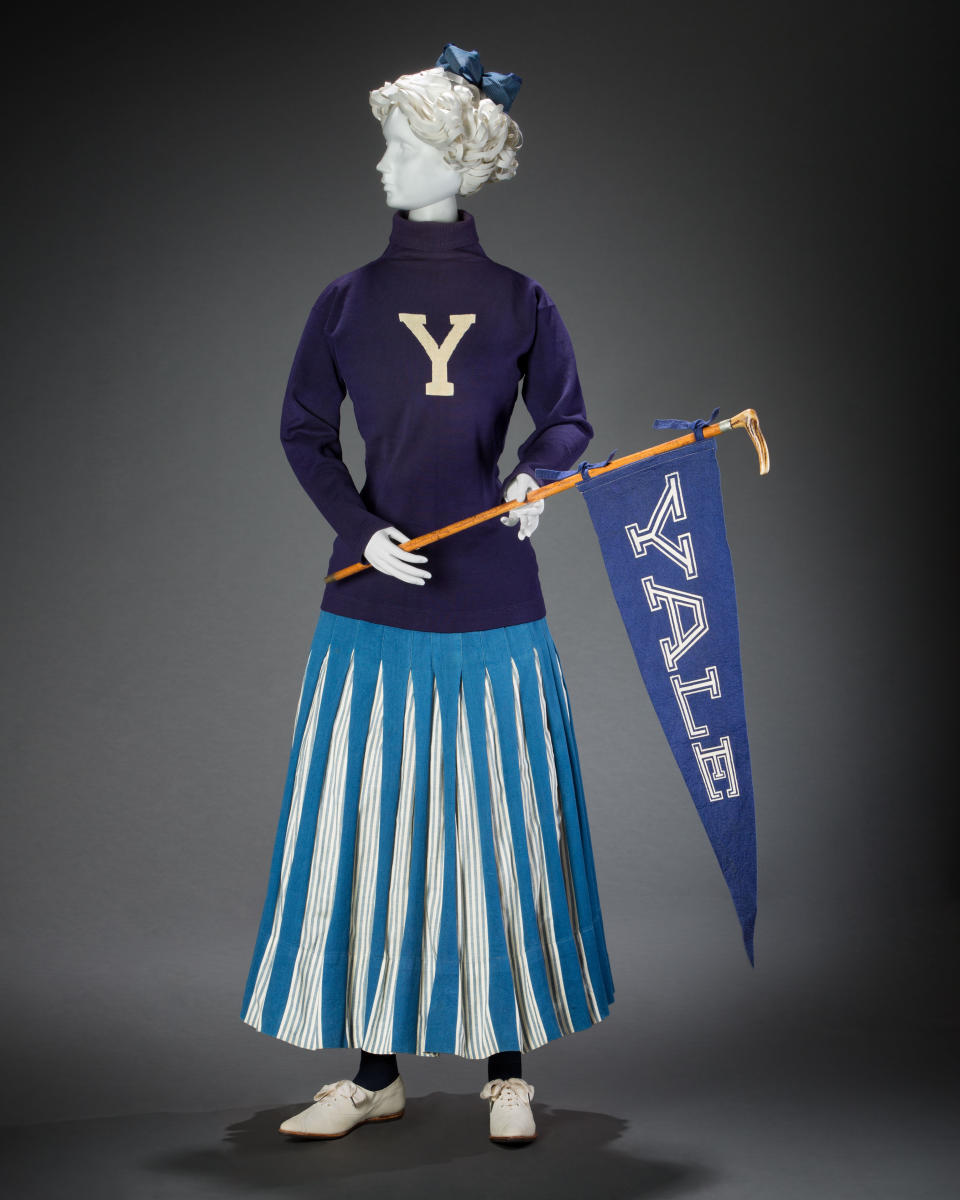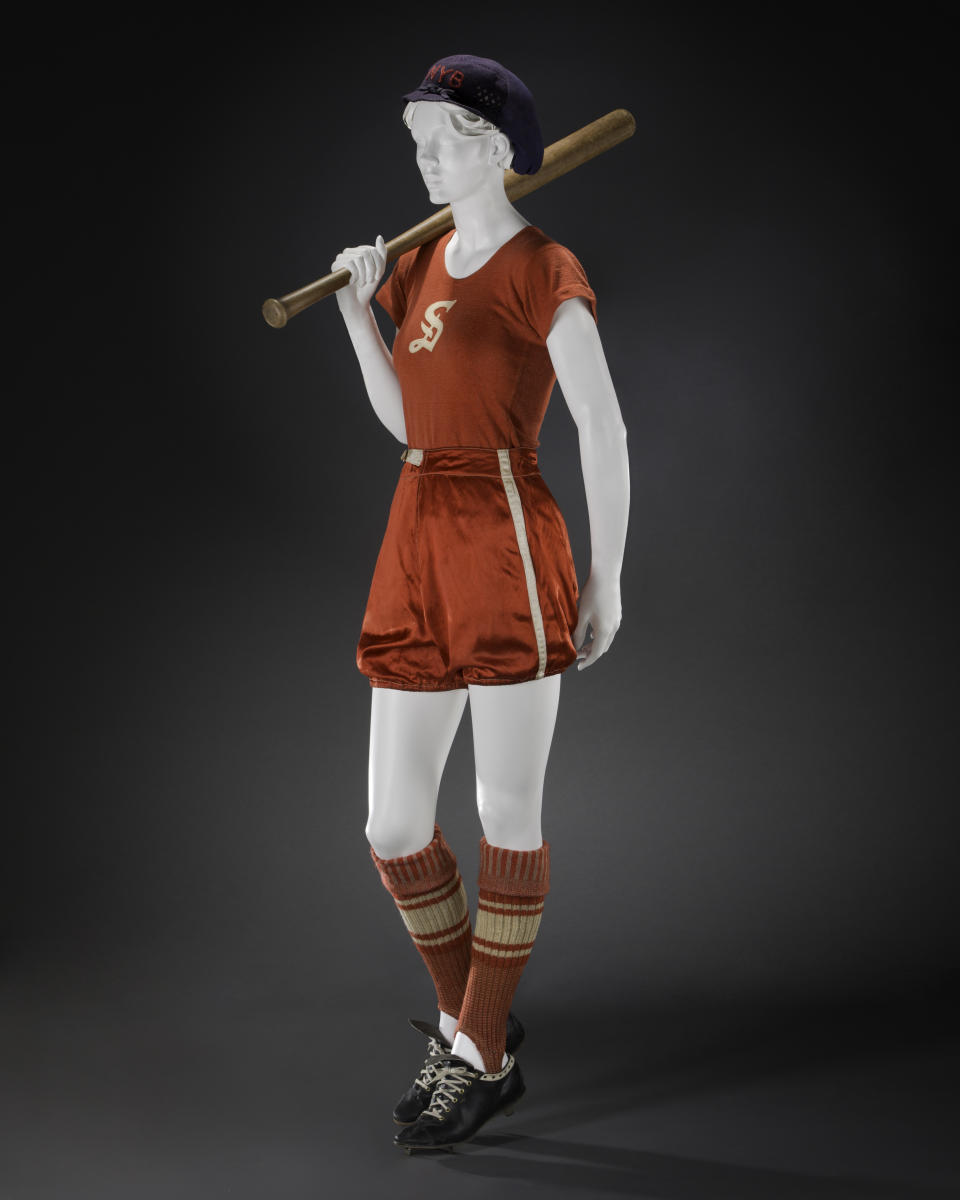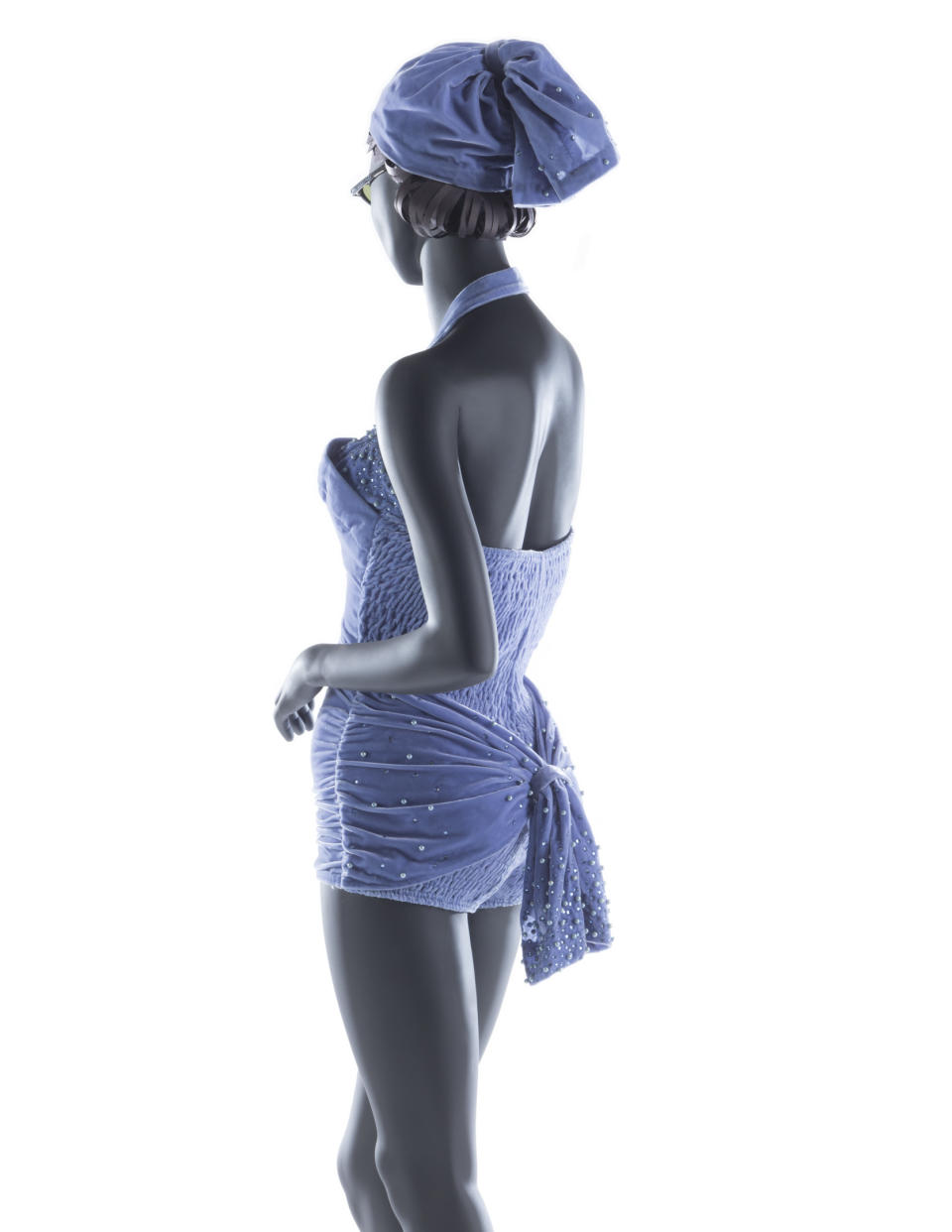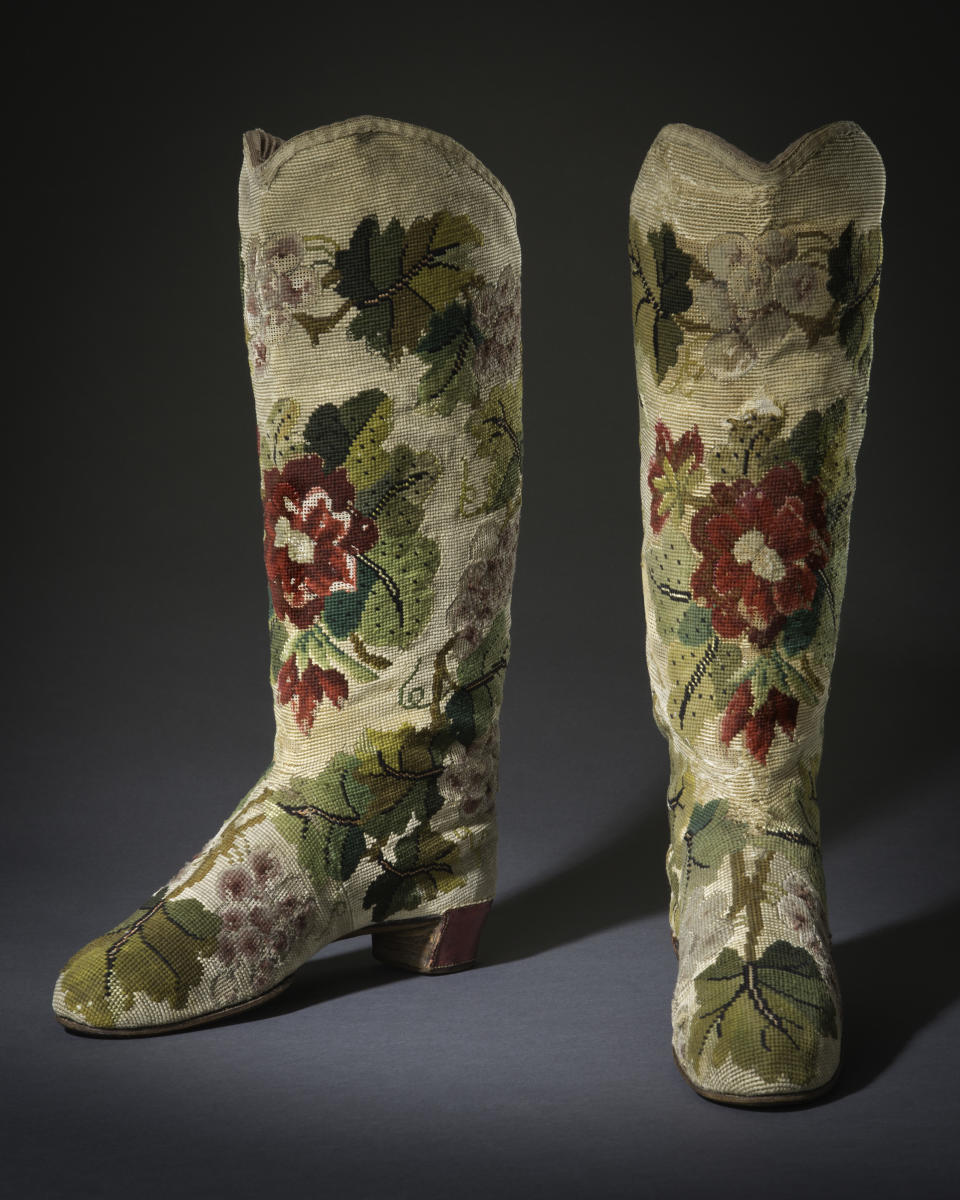FIDM Explores the Evolution of Sportswear With New Exhibit ‘Sporting Fashion: Outdoor Girls 1800 to 1960’

The Fashion Institute of Design & Merchandising has teamed up with the American Federation of Arts on an exhibition that explores the evolution of sporting fashion.
Called “Sporting Fashion: Outdoor Girls 1800 to 1960,” the exhibition explores how women’s sporting attire has changed over a 160-year period and the progression of technology that came with making sportswear. The show, inspired by a 1940s scarf that was inscribed with the phrase “Outdoorgirl,” features illustrations of women engaged in 13 different sporting activities. The exhibition was brought to life through the use of authentic activewear pieces from labels — including Champion, Chanel, Balenciaga and more — that were current during that specific time. The exhibit is meticulously curated to show the progression of sporting fashion with new ideas, technologies, social growth and more that ultimately represent the “new woman” of each decade.
More from Footwear News
Every Aspiring Shoe Designer Should Have This Quality, According to Industry Experts
Oscar-Nominated Costume Designers Share Shoe Secrets From Their Films
The exhibition debuted this month at The Frick Pittsburgh and will travel to seven institutions across the country through 2024.
Speaking with FIDM curator Kevin Jones, FN was able to learn in intimate detail about the curation process, how gender roles come into play in the sporting fashion world and more. Jones affirmed, however, that this project is not meant to compare women from different time periods, but to showcase how they were all “modern” women.

Courtesy of FIDM
It’s easy to think of today’s activewear as “liberal” or “updated,” but Jones said that “What is liberal in one era is not necessarily considered liberal later on. … Every woman in this project was the modern woman.”
The exhibition also answers the question as to how colors play a part in women’s outdoor fashion and how that has changed today. “We start our project in 1800 because of the availability of garments that have survived … and so we see that in the 19th century the color theory of what is meant for boys and girls was the reverse of what we think today,” said Jones. “Girls were actually dressed in blue and boys wore more pink. Pink was considered a lighter shade of red, which was an aggressive color –— whereas blue was soft to the eyes and often associated with the Virgin Mary.”

Courtesy of FIDM

Courtesy of FIDM
Jones noted that there is a shift that happened in the 1920s and 1930s — where boys began to wear blue and girls were sporting pink. He also reveals that when it comes to sporting fashion, colors were also determined by the activity.
“If a woman was out hunting — you, of course, wear colors that blended into your surroundings, but with golf, you could have bright greens, Saturday reds. … All throughout sporting fashion, we’ve got tons of color combinations,” he said.
Furthermore, colors in activewear were also determined by what colors were fashionable at the time.
“You think of the 1870s and that’s when synthetic dyes became very popular,” said Jones. “This was really avant-garde, as that was a modern technology because, before that, it was natural dyes.”
The exhibition also explores the craze surrounding the idea of sporting attire worn by women who weren’t athletes. (Today, we see that as celebrities wear biker shorts to grab coffee).

Courtesy of FIDM
Jones said that wearing activewear in a more lifestyle manner emerged at universities for women in the 1890s, where they were only around each other and could wear what they wanted when it came to playing sports.
“There were no men around; it was a lot more liberal for the women in what they could wear on the court. It’s not that women were dressing down, they were just in a much more relaxed atmosphere,” Jones explained.
Jones shared that this idea of dressing more casually carried into the 1920s, when it came to beachwear. “It’s not exactly what we think of when we say athleisure today, but it’s the genesis. It started with beachwear as women wore pants more,” he said.

Courtesy of FIDM
As stated in the name, the exhibition documents fashion from 1800 to 1960, but that doesn’t mean that sporting fashion has ended.
“[Sporting fashion] doesn’t stop. What happened is that we found that everything that a woman needed when it comes to sportswear has been designed. We have women playing lacrosse, basketball, hockey, cycling and spectating. … Women are doing it all and they’ve got the garments to do so,” Jones said.
He added, “These are not dead clothes. [We’ve] noticed through the process that good design is good design, and while they may have been used differently in the past, they are still of use today as the entire world has become a sportswear world.”
Best of Footwear News
Sign up for FN's Newsletter. For the latest news, follow us on Facebook, Twitter, and Instagram.

